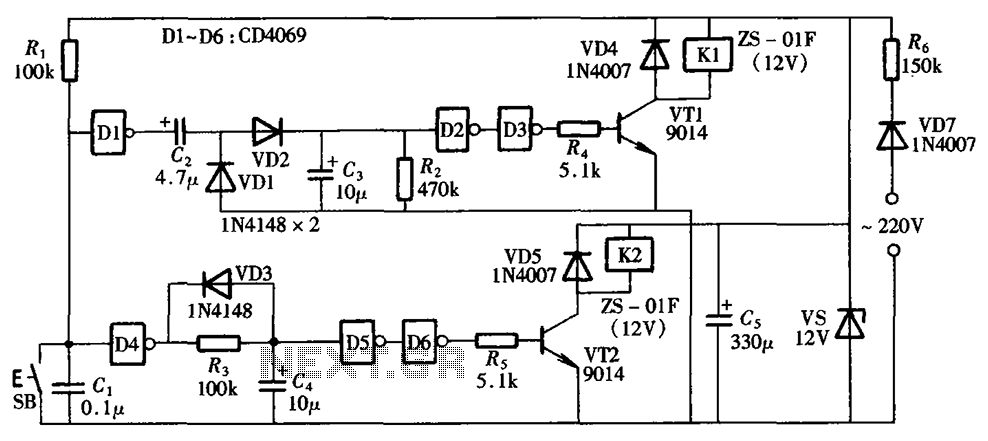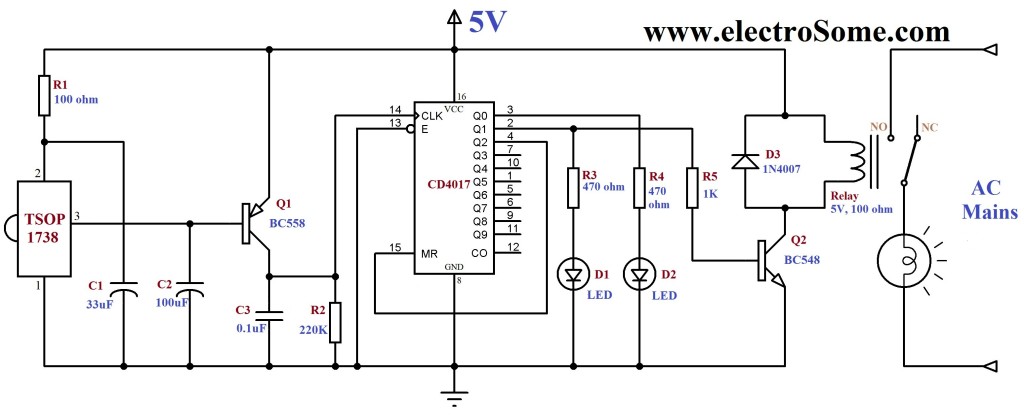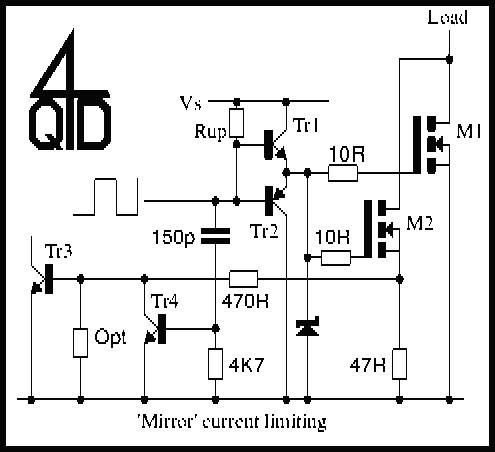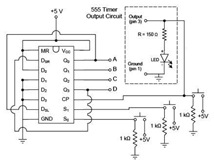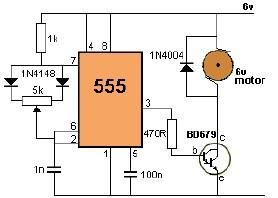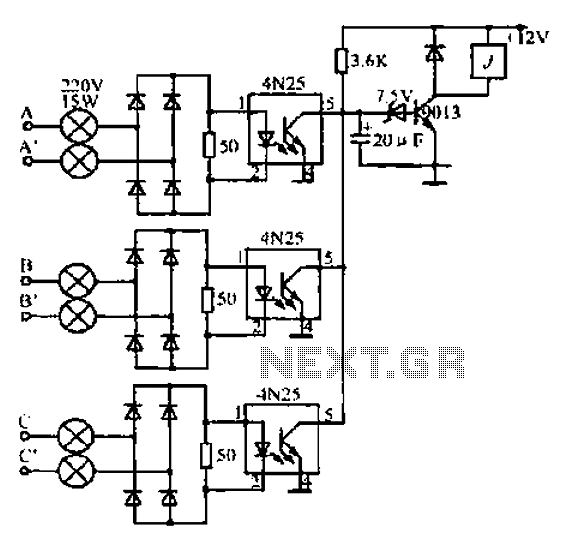
Water-level sensing and control
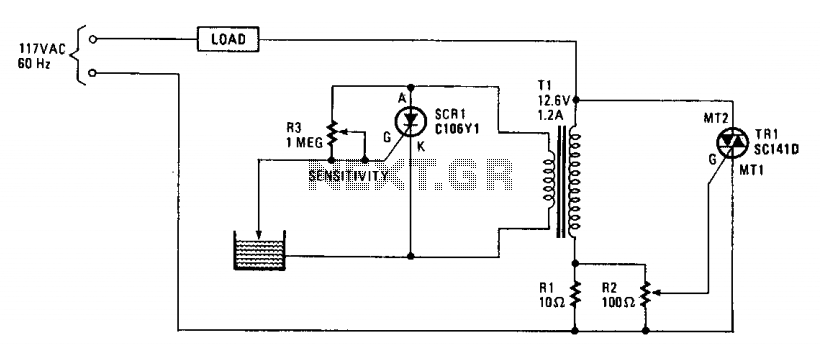
The operation of the circuit is based on the difference in the primary impedance of a transformer when its secondary is loaded compared to when it is open-circuit. The impedance of the primary of T1 and resistor R1 are in series with the load. The gate-control voltage of the triac is developed across parallel resistors R1 and R2. When the water level is low, the probe is out of the water, and SCR1 is triggered on. It conducts and imposes a heavy load on the secondary winding of transformer T1. This load is reflected back into the primary, gating triac TR1 on, which energizes the load. If the load is an electric valve in the water-supply line, it will open and remain open until the water rises and touches the probe, which shorts SCR1's gate and cathode, thereby turning off SCR1 and effectively open-circuiting the secondary. The open-circuit condition, when reflected back to the primary winding, removes the triac's trigger signal, thereby turning the water off. The load may range from a water valve, a relay controlling a pump supplying water for irrigation, to a solenoid valve controlling the water level in a garden lily pond.
The described circuit utilizes a transformer-based control mechanism to manage water levels through a triac and SCR (Silicon Controlled Rectifier). The primary side of transformer T1 is connected in series with resistor R1, establishing a relationship between the load and the primary impedance. The configuration is designed to detect changes in water levels via a probe that interacts with SCR1.
When the water level is low, the probe remains above the water surface, causing SCR1 to activate. This activation draws current, creating a significant load on the transformer's secondary winding. The load's impedance is reflected back to the primary side, which influences the gate voltage of triac TR1. If the load is an electric valve or similar device, it will remain operational until the water level rises sufficiently to contact the probe.
Upon contact with water, the probe shorts the gate and cathode of SCR1, resulting in the SCR turning off. This action effectively removes the load from the secondary winding of the transformer, transitioning the system into an open-circuit state. The resulting change in impedance at the primary side eliminates the gate trigger signal for triac TR1, leading to the deactivation of the water supply.
The circuit is versatile, allowing for various applications such as controlling irrigation systems via a relay or managing solenoid valves in decorative water features like garden ponds. The design ensures reliable operation and responsiveness to water level changes, making it suitable for automated water management systems.The operation of the circuit is based on the difference in the primary impedance of a transformer when its secondary is loaded and when it is open-circuit. The impedance of the primary of Tl and resistor Rl are in series with the load. The triac's gate-control voltage is developed across parallel resistors Rl and R2. When the water level is low, the probe is out of the water and SCR1 is triggered on. It conducts and imposes.a heavy load on transformer Tl's secondary winding. That load is reflected back into the primary, gating triac TR1 on, which energizes the load. If the load is an electric value in the water-supply line, it will open and remain open until the water rises and touches the probe, which shorts SCRl's gate and cathode, thereby turning off the SCRl, which effectively open-circuits the secondary. The open-circuit condition—when reflected back to the primary winding—removes the triac's trigger signal, thereby turning the water off.
The load may range from a water valve, a relay controlling a pump supplying water for irrigation, or a solenoid valve controlling the water level in a garden lily pond. 🔗 External reference
The described circuit utilizes a transformer-based control mechanism to manage water levels through a triac and SCR (Silicon Controlled Rectifier). The primary side of transformer T1 is connected in series with resistor R1, establishing a relationship between the load and the primary impedance. The configuration is designed to detect changes in water levels via a probe that interacts with SCR1.
When the water level is low, the probe remains above the water surface, causing SCR1 to activate. This activation draws current, creating a significant load on the transformer's secondary winding. The load's impedance is reflected back to the primary side, which influences the gate voltage of triac TR1. If the load is an electric valve or similar device, it will remain operational until the water level rises sufficiently to contact the probe.
Upon contact with water, the probe shorts the gate and cathode of SCR1, resulting in the SCR turning off. This action effectively removes the load from the secondary winding of the transformer, transitioning the system into an open-circuit state. The resulting change in impedance at the primary side eliminates the gate trigger signal for triac TR1, leading to the deactivation of the water supply.
The circuit is versatile, allowing for various applications such as controlling irrigation systems via a relay or managing solenoid valves in decorative water features like garden ponds. The design ensures reliable operation and responsiveness to water level changes, making it suitable for automated water management systems.The operation of the circuit is based on the difference in the primary impedance of a transformer when its secondary is loaded and when it is open-circuit. The impedance of the primary of Tl and resistor Rl are in series with the load. The triac's gate-control voltage is developed across parallel resistors Rl and R2. When the water level is low, the probe is out of the water and SCR1 is triggered on. It conducts and imposes.a heavy load on transformer Tl's secondary winding. That load is reflected back into the primary, gating triac TR1 on, which energizes the load. If the load is an electric value in the water-supply line, it will open and remain open until the water rises and touches the probe, which shorts SCRl's gate and cathode, thereby turning off the SCRl, which effectively open-circuits the secondary. The open-circuit condition—when reflected back to the primary winding—removes the triac's trigger signal, thereby turning the water off.
The load may range from a water valve, a relay controlling a pump supplying water for irrigation, or a solenoid valve controlling the water level in a garden lily pond. 🔗 External reference
